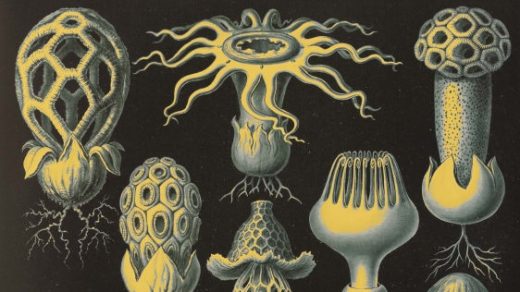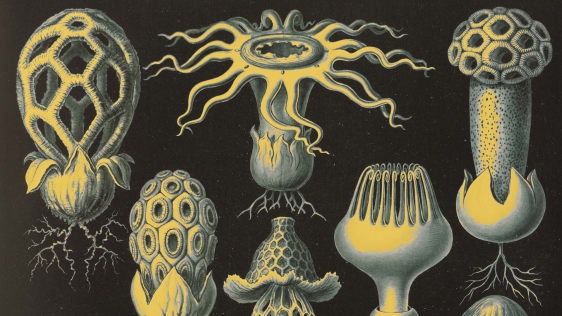The ‘Shroom Boom: Will Trendy Medicinal Mushrooms Go Mainstream In 2018?
On Los Angeles’s trendy Sunset Boulevard–nestled between a PureBarre and a cycling studio–you’ll spot Lifehouse Tonics, a cafe dedicated to healthy and frothy mushroom beverages.
The sleek, minimalist storefront boasts a Goop-itized version of a Starbucks menu: coffees and blended iced drinks concocted with almond milk, organic mocha chips, and mysterious-sounding fungi. Featured beverages include blended tonics, elixirs, and shakes made with extracts from medicinal mushrooms that grow on trees, mushrooms with names like lion’s mane, chaga, reishi, and cordyceps.
On any given day, you’ll find impeccably dressed hipsters asking the staff just which mushroom ingredients might best serve their needs: Does this establishment, for example, have a mushroom that promotes energy? Maybe something that will help them focus better? And can it taste like a Frappuccino? The answer is always a cheerful, drawn-out yes.
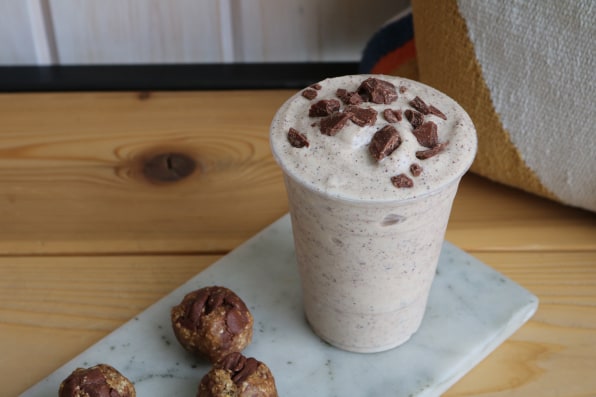
Lifehouse Tonics is one of several new brands popularizing medicinal mushrooms–introducing the public to fungi that have long been treasured in some Asian cultures for their health-promoting and anti-inflammatory properties. The mushroom market is expected to exceed $50 billion in the next six years, reports Grand View Research. As consumers increasingly look to incorporate “functional foods” in their diets, the medicinal mushroom extract market is poised to grow 6.3%. Food Navigator found that year-on-year sales for food products incorporating medicinal mushrooms rose have risen between 200-800%, depending on the variety.
Meanwhile, Whole Foods listed medicinal mushrooms–including chaga and reishi–as a top food trend for 2018. The retailer sees significant uptick in mushroom broths, coffee, and chocolate powders, even body-care products like soaps and shampoo.
“There have been a lot of strides in the last three years,” explains Lifehouse Tonics founder Jack Latner, who has seen his quarterly revenue growth on average 80% since his company’s inception 22 months ago. “There are so many more products available for people who want to take mushrooms, who want to have that as part of their diet.”
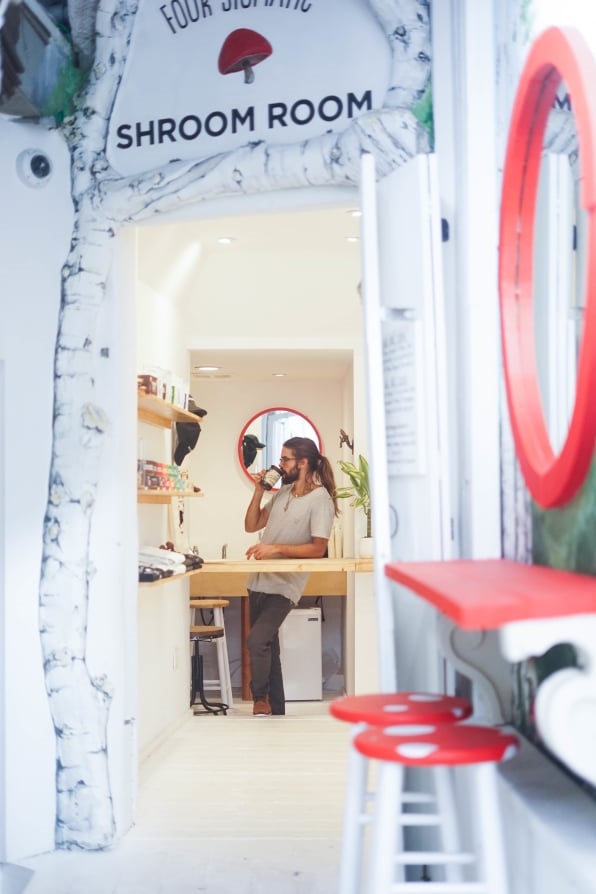
A Trend Takes Root
Tero Isokauppila, founder of Four Sigmatic Foods, is a 13th-generation mushroom forger. The Finnish entrepreneur launched his business selling medicinal mushroom products like drinks, extracts, and elixirs overseas in 2012. Three years later, upon witnessing Americans’ rising interest in health food products, he brought his company to the States. Today, Four Sigmatic sells over 20 products in the coffee, tea, and supplement categories. Their $23 12 oz. bag of “brain-boosting” ground coffee is repeatedly sold out online.
Four Sigmatic also boasts a bustling mushroom coffee cafe called The Shroom Room in Venice Beach, not too far away from another brand cashing in on mushroom powders–Moon Juice.
“We’ve seen drastic growth in consumer awareness and consumer traction,” reports Isokauppila. “It’s been pretty remarkable what has happened, especially in the last year or so.”
Four Sigmatic tripled annual growth with products sold in over 1,000 stores nationwide, including ones you wouldn’t expect, like fashion retailer Free People. Isokauppila’s book, Healing Mushrooms, is a guide to adaptogenic mushrooms. The book was an Amazon bestseller and a featured product on Goop.com.
Consumers have increasingly looked to purchase products with purported healthy attributes, reports Nielsen’s Global Health and Wellness Survey. But within that mindset, says Isokauppila, there are several converging trends gaining traction: “Functional foods,”, i.e., edible items that have health benefits beyond basic nutrition; “Ancient eating,” the practice of consuming “authentic foods” of our ancestors; Eastern medicine infused in Western products; “gut healthy” products like probiotic-drinks; and lastly, adaptogens, chemicals that allegedly possess anti-stress properties. Mushrooms, claims Isokauppila, meet at the nexus of all these trends.
“Mushrooms are pretty relevant to consumers currently,” says Isokauppila. “People are excited about mushroom coffee because it’s a better-for-you coffee experience that is not acidic and doesn’t give you the jitters that normal coffee does, but still has this energizing effect.”
Is Mushroom Power Real?
While medicinal mushrooms are being pedaled by the likes of Gwyneth Paltrow (she prefers them with her morning smoothie), the scientific community still has qualms about their efficacy.
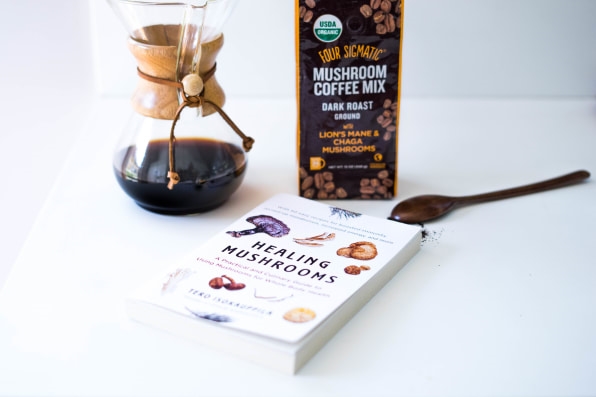
Nicholas P. Money, a professor of botany at Miami University, says that while medicinal mushrooms contain an array of chemical compounds that may have useful pharmacological properties, overall, “We should be very wary when we read about the seemingly miraculous properties of lingzhi, lion’s mane, turkey tail, chaga, and other fungi.”
The medical community needs more clinical trials, Money stresses, to better assess mushrooms’ true efficacy when it comes to preventing or treating illnesses.
“The claims made by the medicinal mushroom industry should be treated with great skepticism,” Money warns.
And since medicinal mushrooms are relatively new to the U.S. palate, most stateside nutritionists learned little about them during their training.
Nutritionist Christine M. Palumbo is on the nominating committee of the Academy of Nutrition and Dietetics, yet she says that mushrooms, which are indeed chock-full of Vitamin D, were one of a few foods that didn’t get much attention during her education.
“Mushrooms were described as being something to add texture and flavor but otherwise were just there, she recalls.
Still, Palumbo recognizes that mushrooms have been prized by many for thousands of years for seeming to have antibiotic and anti-inflammatory properties, and is noticing that they are gaining more attention in medical circles. Palumbo sees the new wave of medicinal mushroom products particularly resonating with “people who have resources” (i.e., money to spend), as well as individuals in their 60s who have a bit more time to experiment with their diet and, well, want to stave off the Grim Reaper.
Paul Stamets, a leading mycologist and the Invention Ambassador of the American Association for the Advancement of Science, clarifies that medicinal mushrooms support immunity–but do not necessarily prevent, cure, or treat any disease complex. It’s an important distinction, he explains, and one that he clarifies for his brand Fungi Perfecti, which sells over 200 medicinal mushrooms products, such as capsules and extracts, in over 30,000 stores. It boasts 70% of the market share, and in the last year, experienced double-digit growth.
Stamets is adamant that with more trials currently being conducted, the greater public will eventually discover antioxidant powers of the mushroom. In fact, he is planning a clinical study on lion’s mane to further investigate its alleged ability to regenerate neurons and affect neuropathy.
“It’s one of our rising stars right now,” he says of that particular mushroom. “We’re all getting older, we all face potential dementia and other neuropathy. So this is something that we’re very much focused on–these foods being beneficial.”
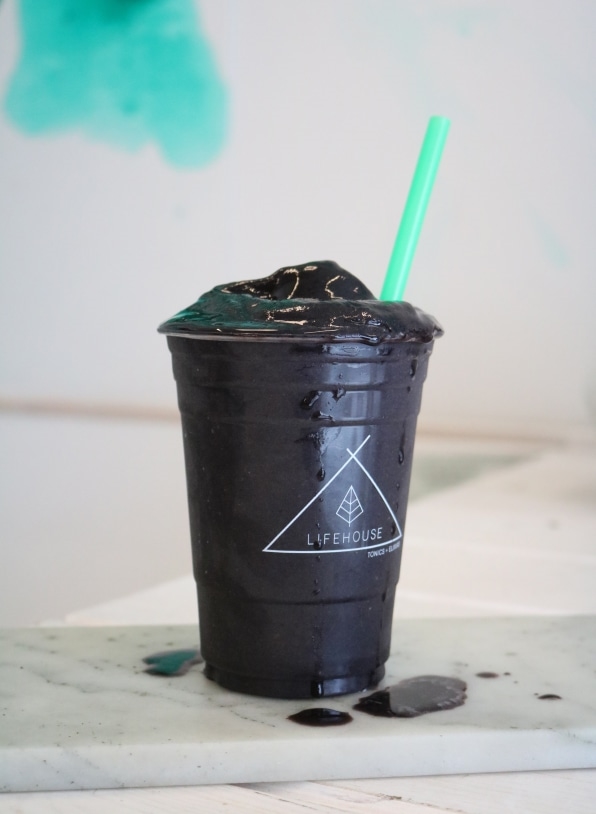
A Complicated Fungi
So how far can mushrooms go in this new age of niche health trends? Can it be the next kale? Or the new kombucha?
Mushrooms will likely experience further growth, explains Latner, but it has a few glaring hurdles to overcome. For one, taste. Lifehouse Tonics, along with other brands, spends a large amount of time formulating products to mask mushrooms’ mud-like flavors. (Oftentimes, it’s with the help of chocolate chips.)
There’s also the barrier of prep–one cannot simply eat these mushrooms raw. They must be dual extracted and heated for oral consumption. “I think that there’s going to be a continued stigma against medicinal mushrooms down the road because you can’t just take medicinal mushroom and sauté them with onions and garlic to make a risotto,” says Latner.
Stamets also brings up the prickly issue of origins, in that many brands fail to disclose where they source their mushrooms from. Many import their produce from China, which Stamets find troublesome thanks to that country’s pollution issues and rampant pesticide residues. That’s why Fungi Perfecti only sources mushrooms from the United States.
“You should be very concerned about the origin of species that are being grown,” warns Stamets. “Mushrooms are a reflection of the environment of which they’re grown.”
Several mushroom-hawking competitors, meanwhile, advocate the complete opposite practice: only buying Chinese ingredients. And some medicinal mushroom extracts are not organic or even composed of pure mushrooms, but a mix of powders or mycelium. The disarray of information makes for a confusing consumer experience. Without mainstream medical outlets setting certain parameters, one might want to not even take a chance on these types of mushrooms.
Whole Foods global quality standards coordinator Jody Villecco reports that the retailer inspects ingredients of all medicinal mushroom products–namely coffees, tonics, skincare products, and broths–and requests related studies. “We have to make sure all the ingredients meet our standards,” says Villecco, “then we take a very careful look at labeling, specifically health claims.”
There’s also environmental concern over mushroom foraging practices. Chaga, a supposedly immune-boosting mushroom, is generally not sustainably harvested, says Stamets. The variety occurs in one out of every 10,000 birch trees and one must use a machete or a hatchet to gather it.
“[The foragers] have cut off parts of the tree, leaving a giant wound in the tree,” explains Stamets, “and then the tree can potentially die.”
Room For Shroom Growth
For medicinal mushroom entrepreneurs, education is key. Companies are leading the way in teaching consumers not only about why they claim mushrooms can possibly benefit their health, but also how to best use and consume them. Four Sigmatic, for example, has an email list of a few hundred thousand and moderates a robust Facebook group where over 10,000 members share tips and information about how to utilize fungi for energy, menstrual cramps, and even pet pain.
Isokauppila says social media has been a key driving force in raising mushroom awareness. Niche categories can now find an e-commerce audience that wasn’t attainable when he first started out 12 years ago.
“Back then, the industry was dominated by large food companies,” says Isokauppila.”I saw how the blogosphere was educating people and health communities were sprouting up online… Companies started to be built from a more online heavy presence versus immediately going to retail.”
Wellness sites such as Well+Good and MindBodyGreen have also helped educate readers on mushrooms’ hidden talents. Stamets, for his part, has become a mushroom celebrity of sorts within certain tech and digital communities. Podcast host Joe Ragan, who hosted the mycologist on his program this past fall, said Stamets was the most-requested guest by the show’s fans. Stamets’ TED Talk on the power of mushrooms has been viewed nearly 5 million times, while the producers of Star Trek: Discovery were so entranced by Stamets’ work that they introduced a mycologist character bearing his name.
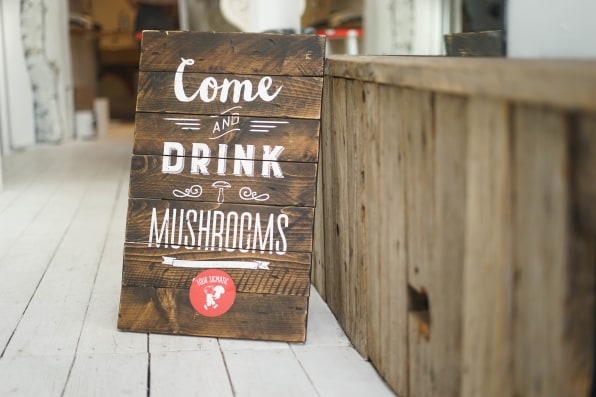
If anything, it seems that medicinal mushrooms are spreading beyond the smaller health circles of Los Angeles and New York. Isokauppila says many of his customers hail from the Midwest, Northeast, and Florida. Mostly, these consumers are millennials or Baby Boomers–and, of course, biohackers. All this interest is giving mushrooms startups confidence to try growing in their businesses in new markets.
Following their success in Los Angeles, Lifehouse Tonics intends to open more stores in cities like Chicago and Miami, while also expanding its product collection online. Moon Juice, meanwhile, will also open more storefronts and sell its $38 jars of adaptogenic blends at beauty behemoth Sephora and a few hotel lobby bars.
“We are still very much in the early days,” says Isokauppila, who will reveal several new coffee products in the coming year. “But globally, there’s been a huge change….Right now we’re just scratching the surface.”
But seeing as Starbucks recently announced a fellow adaptogen–tumeric–into its lattes, it won’t be all that surprising to see more mainstream retailers dip into Eastern-inspired ingredients.
“Ten years ago people like my dad would never drink green juice,” says Latner, expounding on the healthy beverage trend. “But now [he does] … the market has changed.”
Fast Company , Read Full Story
(55)

